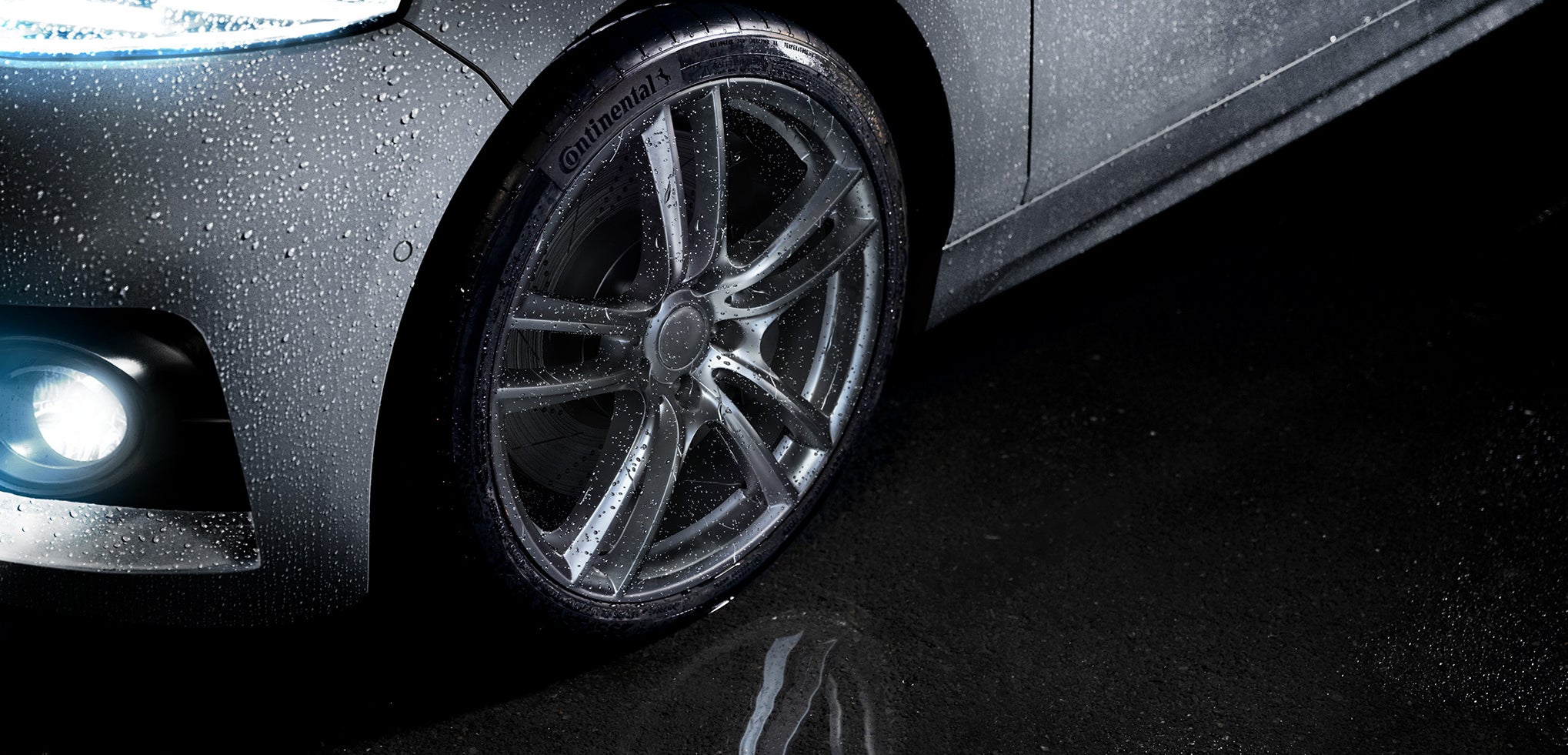
# Driving Situations
Holiday journey
Checklist for a carefree road trip
For people who love driving, there's nothing as fun as taking an epic road trip.
There's a joy to be had from the undulating scenery, the charming locals, and of course, the freedom of the open road. But as in all things in life, it's important to expect the unexpected while traveling. A quick inspection of the tires on your car, for example, could save your itinerary from an unnecessary interruption.
So, whether you're taking a solo trip, hitting the highway with some good friends, or it's a school break with your beloved family, follow this useful advice to ensure you arrive at your destination relaxed and unharmed.

Travel with proper tire pressure
Why is it so important to check the pressure on your tire? Because correctly inflated tires have a direct correlation to fuel efficiency. There's less rolling resistance, which equates to less fuel consumption as you drive along your route. They're also safer and last longer – less chance of a blowout or uneven tread wear – ultimately saving you money.
The general advice is to check tire pressure once every two to four weeks, especially before embarking on a long road trip. Take the reading when the tires are cold (e.g., without driving the car for at least three hours).
What's the correct tire pressure? This information is in the vehicle owner's handbook, under the fuel filler cap, or on the door post on the driver's side. The tire pressure must be identical for both tires on the same axle but may be different between the front and rear axle. After topping them off with air, don't forget to close the valve caps securely; this will protect the valve from dirt and dust and prevent air leaking. A missing valve cap should be replaced right away.
Another thing to note is the Tire Pressure Monitoring System (TPMS) that comes standard in newer cars. The TPMS will emit a warning if the pressure drops 25 percent below the vehicle manufacturer's recommended pressure. In most cases, a slight drop in pressure won't trigger a warning light, so the loss of fuel economy wouldn't be immediately apparent. That's another good reason why drivers should independently verify the tire pressure every two to four weeks.

Adequate tire tread depth
Proper tread depth is essential to prevent aquaplaning in wet weather. The legal minimum is 1.6mm in most countries. Please consider that safe driving in wet and snowy weather conditions is affected by the tread depth, the pattern design and the rubber compound of the tread of your tires. On wet or snow-covered roads braking performance will progressively decline with lower tread depths. On wet roads there is an additional increased risk of aquaplaning with fading tread depths.
Therefore, check your tires regularly, reduce your speed on wet and snowy roads and consider replacing your tires in good time.. Keep an eye open for signs of uneven wear on the tread, too. Uneven wear reduces the ability of the tread to grip the road in adverse conditions. Look for unusually smooth areas, high and low areas, or any signs of damage. It's also wise to check the tire sidewalls for gouges, cuts, bulges or other irregularities.
If it becomes necessary to replace one (or more) of your tires, make sure the new tire is the same size, type and speed rating that came on the vehicle as original equipment. These details can be found on the sidewall of your current tire or in the owner's handbook.
Check the wheel alignment
Have you hit any potholes or curbs recently? Unexpected jolts and jostles of this nature can put the wheels out of alignment and damage your tires. Misaligned wheels lead to uneven and excessive tread wear and will need correction by a tire technician.
Have the alignment checked periodically as part of your vehicle maintenance routine, for example when switching over from summer tires to winter tires or if you experience warning signs like excessive vibration when driving at high speeds.

Tire rotation before trips
Regularly rotating the tires on a vehicle will help achieve more uniform wear and extend the life of your tires. What that means is you can expect to pack in more scenic routes on your cross-country road trips before investing in a new set of tires. The standard recommendation for tire rotation is approximately every 8,000 – 13,000 kilometers.
If you notice uneven wear on one or more of your tires, however, you should ask your local tire dealer to check for any misalignment, imbalance, or other possible cause before rotating them.

Don't overload the vehicle
When planning for that family road trip, it’s tempting to load up the car boot trunk with lots and lots of luggage. Whether it's packing a tent for a campground, or a picnic hamper for the national park, you don't want to miss a thing. The trouble is, overloading a vehicle can shorten the life of your tires. And every 90 kg of extra weight can reduce fuel economy by 0.42 km per liter. So, check the owner's documentation for the car's maximum load capacity.
Spare tire planning
Speaking of the boot, this is also where your spare tire is located. Before taking a road trip, give the spare a thorough inspection for tire pressure and any other issues. If you’ve been carrying this spare in the boot for a long time, however, it might need replacing. That's because the age of the tire can impair its performance; the rubber may have become cracked and brittle, for example.
Take regular breaks on long drives
Driving when tired is dangerous. When you're weary from traveling, you're less likely to be alert to potential hazards like potholes, road debris, and sudden stops and starts in traffic. Any of these things can cause trouble for your tires, or perhaps even a collision with another car.
Nobody wants to spend their precious vacation gazing at the backside of a tow truck, so be sure to take regular breaks and rest stops for coffee and a snack. Check in at a roadside hotel if necessary. Your and your passengers’ safety is paramount for a successful road trip.
Related content
-
 2024/10/17Driving in snowWhen winter arrives, it's essential to take proper precautions for yourself and your vehicle. Here are some useful tips for safely driving in snow.Read more
2024/10/17Driving in snowWhen winter arrives, it's essential to take proper precautions for yourself and your vehicle. Here are some useful tips for safely driving in snow.Read more -
 2024/10/17Driving in heavy rainDriving a car in the rain is much more challenging than driving in fine weather. Follow these safety tips for driving in wet conditions.Read more
2024/10/17Driving in heavy rainDriving a car in the rain is much more challenging than driving in fine weather. Follow these safety tips for driving in wet conditions.Read more -
 2024/10/17Driving in fogIf possible, don't drive in foggy conditions. Fog is a major cause of road accidents. But if it can't be avoided, here are some safe driving tips.Read more
2024/10/17Driving in fogIf possible, don't drive in foggy conditions. Fog is a major cause of road accidents. But if it can't be avoided, here are some safe driving tips.Read more
